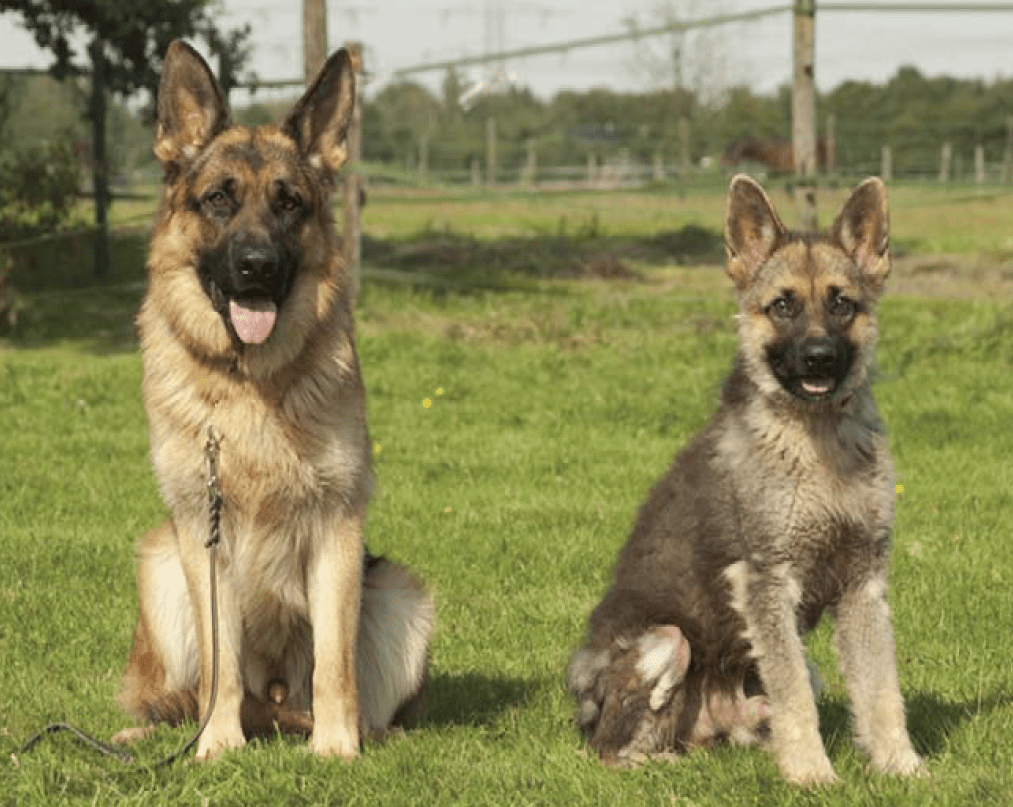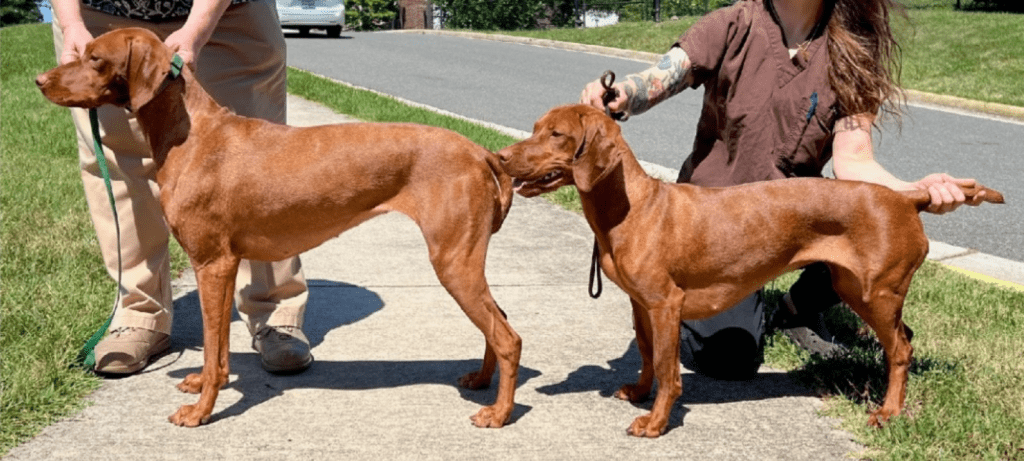
Dwarfism is a diverse group of inherited disorders that affect the growth and development of bone and cartilage. Domestication and artificial selection have led to significant differences in the size and shape of the skeleton of different breeds of dogs. For example, such chondrodysplasia causing shortness of stature is a typical feature of certain breeds such as the Dachshund, Corgi, Basset Hound, as well as many other breeds.

Chondrodysplasia and chondrodystrophy are the result of a specific genetic change and that is the insertion of FGF4 retrogenes into various canine chromosomes. Certain short-legged breeds such as Dachshunds, French Bulldogs and Corgis have an increased risk of intervertebral disc disease, which is associated with the aforementioned genetic change.
In the Dogo Argentino breed, a mutation in the PRKG2 gene was found causing disproportionate dwarfism characterized by deformities of the forelimbs and a disproportionately large head. A causative mutation in the COL11A2 gene was discovered in Labrador retrievers with a mild form of disproportionate dwarfism, termed skeletal dysplasia 2 (SD2). In Norwegian Elkhounds, a mutation in the ITGA10 gene was described to cause chondrodysplasia in nine affected dogs. In miniature poodles affected by osteochondrodysplasia, a deletion of a chromosomal region involving part of the SLC13A1 gene was found. Furthermore, mutations in the COL9A2 gene in Samoyeds and COL9A3 in Labrador retrievers and Nordic Eskimo dogs have been described to cause oculoskeletal dysplasia, a form of short-legged dwarfism with severe eye defects.

Dwarfism can also be caused by a hereditary hormone deficiency, which usually results in a proportional dwarfism and a persistent puppy coat. Pituitary dwarfism, which is caused by a deletion in the LHX3 gene, has been observed in four different dog breeds, such as German Shepherds. In addition, a mutation in the POU1F1 gene has been identified in dogs of the Karelian Bear dog with the same disease. One case of proportional dwarfism in a Chihuahua, accompanied by hypoglycaemia and collapse, was associated with a deletion in the GH1 gene.

The newly described cause of disproportionate dwarfism affects even such a healthy and sporty breed as the Vizsla. The cause is a mutation in the PCYT1A gene discovered recently, at the end of 2022. Affected dogs have significantly shortened and deformed arm and thigh bones.
Genetic testing is a very effective method of preventing genetic defects in dog breeds. With testing, a significant reduction in the number of puppies born with genetic disease can be achieved.
Reference:
Voorbij, A. M., van Steenbeek, F. G., Vos-Loohuis, M., Martens, E. E.,
Hanson-Nilsson, J. M., van Oost, B. A., … & Leegwater, P. A. (2011). A
contracted DNA repeat in LHX3 intron 5 is associated with aberrant splicing and
pituitary dwarfism in German shepherd dogs. PloS one, 6(11), e27940.
Ludwig-Peisker,
O., Ansel, E., Schweizer, D., Jagannathan, V., Loechel, R., & Leeb, T.
(2022). PCYT1A Missense Variant in Vizslas with Disproportionate Dwarfism.
Genes, 13(12), 2354.




